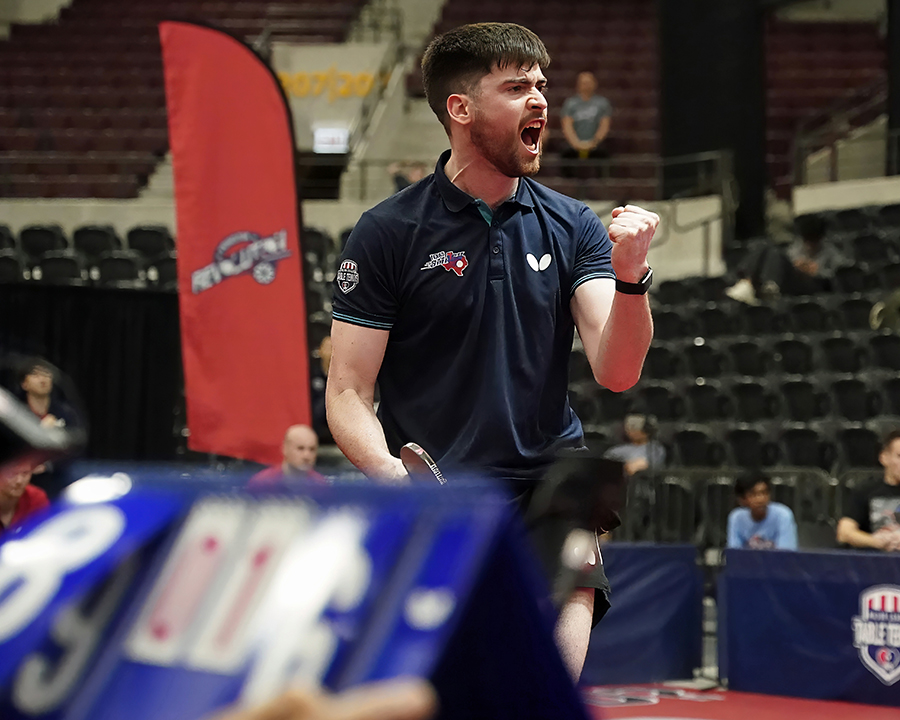Vincent Verhei
08 Feb 2023, 10:41am

The Cincinnati Bengals had been Patrick Mahomes’ kryptonite for the better part of two seasons. Before this year’s championship weekend, Mahomes had yet to beat the pairing of quarterback Joe Burrow and defensive coordinator Lou Anarumo since they joined the Bengals. The Chiefs lost a shootout in the 2022 regular season, then lost after Mahomes’ second-half meltdown in the 2022 playoffs, and then lost again in this year’s regular season. All three games were only decided by three points, but thanks to either the Bengals offense going nuclear or Anarumo putting Mahomes on the fritz, the Chiefs could not beat up on their AFC little brothers. That finally changed in the AFC Championship Game.
Mahomes, on one ankle, played a fantastic game to take down the Bengals 23-20. The difference this time around was that both Mahomes and head coach Andy Reid had a clear idea of which buttons to press. It took them four games, but they identified where the Bengals could be beaten and how to do it. They didn’t waver in their approach, either. Both Mahomes and Reid can be prone to scrapping everything and going balls-to-the-wall, but they didn’t do that in this game. They believed their plan would win out and it did.
The Chiefs won in a number of ways, but two tactics stood out in some of the offense’s biggest moments: four-strong concepts and running away from middle-of-the-field coverage. Four-strong concepts were effective as Bengals-specific beaters. The Bengals love to play two-high zone coverage. Overloading one side of the field with an army of pass-catchers is a simple way to get the advantage. Running away from middle-of-the-field coverage ties into that same theme, especially the Bengals’ Tampa-2 coverages, but it’s more than that. The Chiefs don’t have a legit outside receiver, so it’s easier for them to attack wider sections of the field by getting their ideal matchup lined up inside and having them work towards the outside.
Below is the Chiefs’ attempted hook-and-ladder play. That aspect of the play is cool and quirky, but not really what we’re here to talk about. Instead, this play is a perfect example of both overloading with four pass-catchers and running away from middle-of-the-field coverage, a good intersection of both tactics before we branch out into each individually.
The Bengals are running what looks like a drop-eight version of Tampa-2. Even with the extra body in coverage, the Chiefs find a way to overload and manipulate them. Marquez Valdes-Scantling’s (11, at the bottom of the screen) pylon corner route both occupies the deep safety and keeps the outside cornerback wide. Jerick McKinnon (1) swings out of the backfield to keep slot cornerback Mike Hilton (21) low and wide. All that’s left now is to open up Travis Kelce’s (87) sail route, run away from the leverage of the pole-running middle linebacker in the Tampa-2 coverage, by getting the strong hook defender out of the way. Tight end Jody Fortson’s (88) short over-the-ball route does just that and gives Kelce a valley of space to work with in the middle of the Bengals’ defense.
On the very next play, the Chiefs went to another four-strong concept.
They start in a 2×2 formation before motioning Mecole Hardman (17) across the field into the side with the back, quickly creating a four-strong side of the formation. The motion allows the running back to add on as a third vertical player instantly while still using Hardman as a checkdown to the flat. The four-strong concept overwhelms the Bengals’ four-deep, two-under pressure coverage, a rare call as it is (or, just as likely, a bust by one of the two blitzers), and moves the Chiefs inside the red zone.
When the Chiefs went back to another four-strong concept in the second quarter, it wasn’t expressly to throw to the four-strong side.
Whereas the first example featured an attached backup tight end as the isolated player and the second example featured a long-developing dig route, this concept uses the Chiefs’ best wide receiver, JuJu Smith-Schuster (9), on a quick hitch route to directly attack the sticks. The Chiefs putting their best wide receiver in a normal split away from the strength of the formation to throw right at the sticks is a pretty good indicator that they always had him in mind unless the pre-snap look the other way was too juicy to pass up. They wanted to get him the ball quickly in a one-on-one situation. As they did for much of this game, the Chiefs got the look they wanted and converted one of many first downs.
Later that drive, the Chiefs changed things up again.
The Chiefs start this play by aligning in a 1×4 empty set. Not only is this the first time in this game they aligned with four players to one side without any shifts or motions, but it’s the first time they aligned in empty to get to these four-strong concepts. Or at least they made it appear that way. Rather than get all five eligibles out and overload one side with four players like in previous examples, both of the tight ends attached on either side of the formation stay in to block for a sprintout concept. The Chiefs are trying to isolate Kelce on a corner route with two shorter routes holding everyone else underneath, but the Bengals’ defensive back holds outside leverage, taking that throw away. Kelce still had the one-on-one, though, and that’s always an advantage for the Chiefs regardless of the called play being covered initially. Kelce and Mahomes work their magic late in the down and find the end zone anyway.
By the time the second half came along, the Chiefs needed something else. The Bengals started throwing different pitches, and the Chiefs needed new answers. That’s when the Chiefs really started to attack the Bengals’ coverage by stretching their middle-of-the-field defenders thin or running away from them entirely.
On this third-and-5, the Bengals show a heavy blitz before bailing into a Tampa-2 look. The Chiefs had just the answer for their pole-running linebacker. In theory, that linebacker running through the middle will take away in-breakers and slow down vertical routes down the seam, especially from the No. 3 (innermost) receiver. But the Chiefs simply ran the No. 3 away from that linebacker with a 10-yard out route that settles between the zones. I couldn’t tell you exactly what the No. 2 (middle) receiver is doing on this concept, but all that matters is the Chiefs attacked the Bengals’ coverage in the exact right way with their No. 3 receiver.
When the Bengals played Tampa-2 on a second-and-long later in the game, the Chiefs had a different answer.
Rather than stressing the pole-running middle linebacker, the strong hook defender became the target. The Chiefs run a standard stick concept to the trips side in order to do that. It’s a concept as old as dirt, and especially common in the Reid offense, but it’s a great, simple call for isolating that hook defender and making him choose between the No. 2 on the flat route and the No. 3 on the stick route. The linebacker gets caught between two minds and gives up the easy reception to Kelce to move the sticks.
It wasn’t all two-high for the Bengals, of course. They still mixed in other coverages. When they did, though, the Chiefs frequently had answers. Valdes-Scantling was a major beneficiary of that, especially on a few deeper routes.
The Bengals are running Cover-1 on this third-and-long. Nothing fancy to it. The Chiefs, however, don’t really have anyone who can line up on the sideline and win a route past the sticks. Not consistently, anyway. That’s part of why they instead put Valdes-Scantling, their fastest receiver, at the No. 3 spot and ran him off to the sideline. Not only does Valdes-Scantling get more space to work with, but the offense can use the two outside receivers to run underneath routes and make sure the rest of the defense is tied down. Valdes-Scantling’s deep corner route runs him clean away from the post safety by design and he shakes the cornerback trying to cover him, presenting Mahomes with a wide-open window to keep the drive alive.
As electric as the Chiefs offense has been this year, this was arguably the most satisfying game to watch. The Bengals were supposed to be the arrow in their heel, but the Chiefs read them like a book and stuck true to their game plan without a moment of panic. Even with Mahomes tied down to the pocket more than usual with his ankle issues (or maybe because of that), the Chiefs found ways to methodically pick apart their opponent, control the game, and finally put their orange and black demons to rest.
With two weeks to prepare, Reid and Mahomes will have something ready for the Eagles, too.



















You must be logged in to post a comment Login